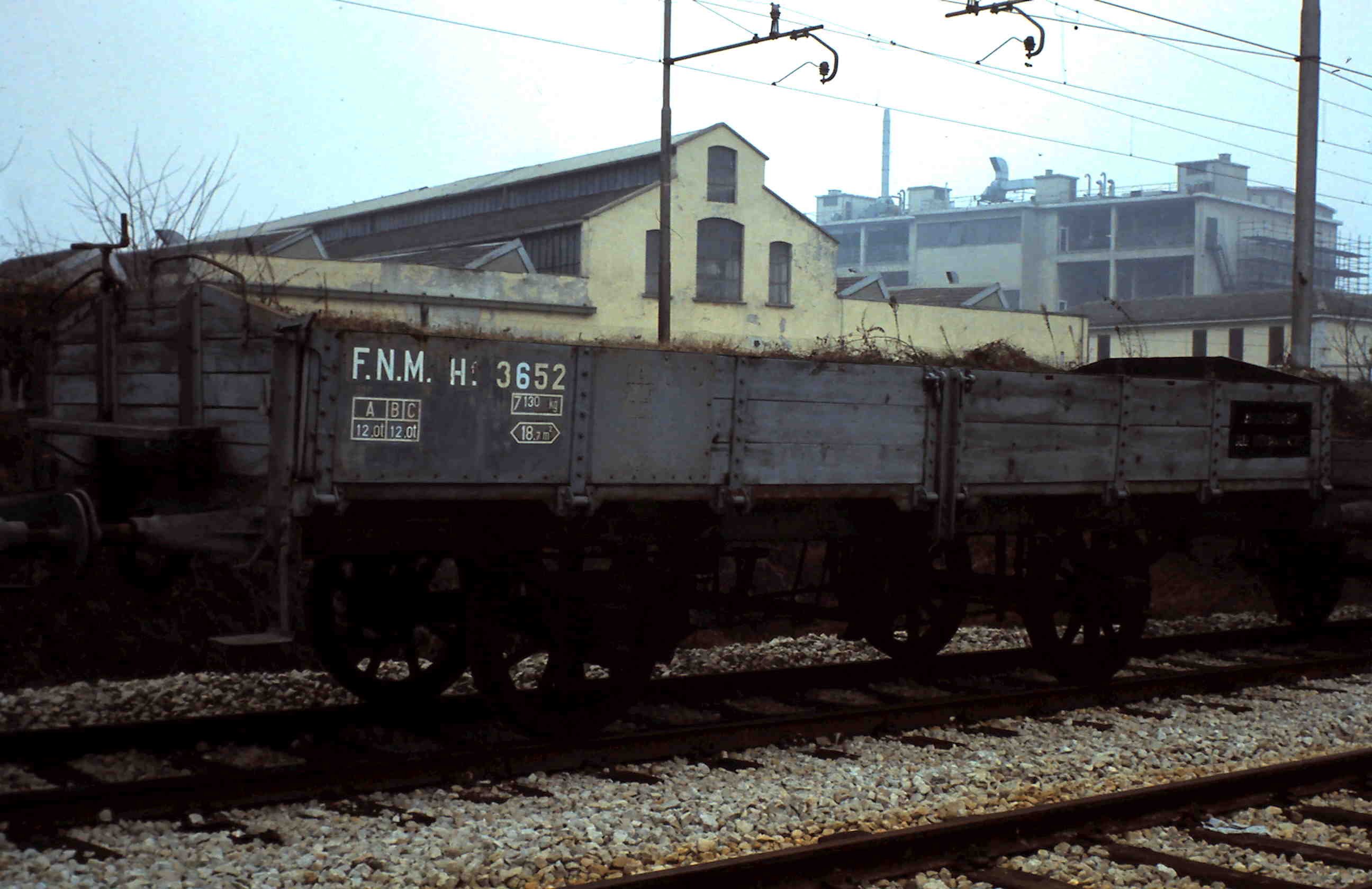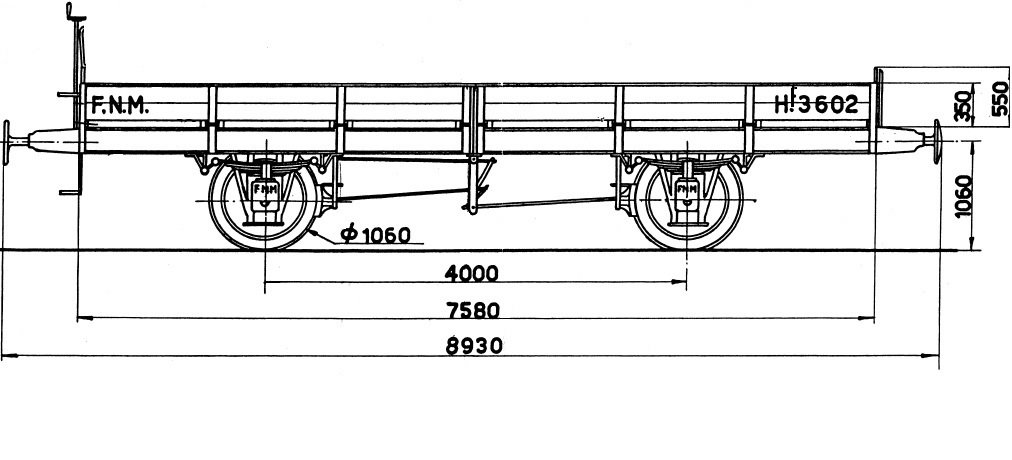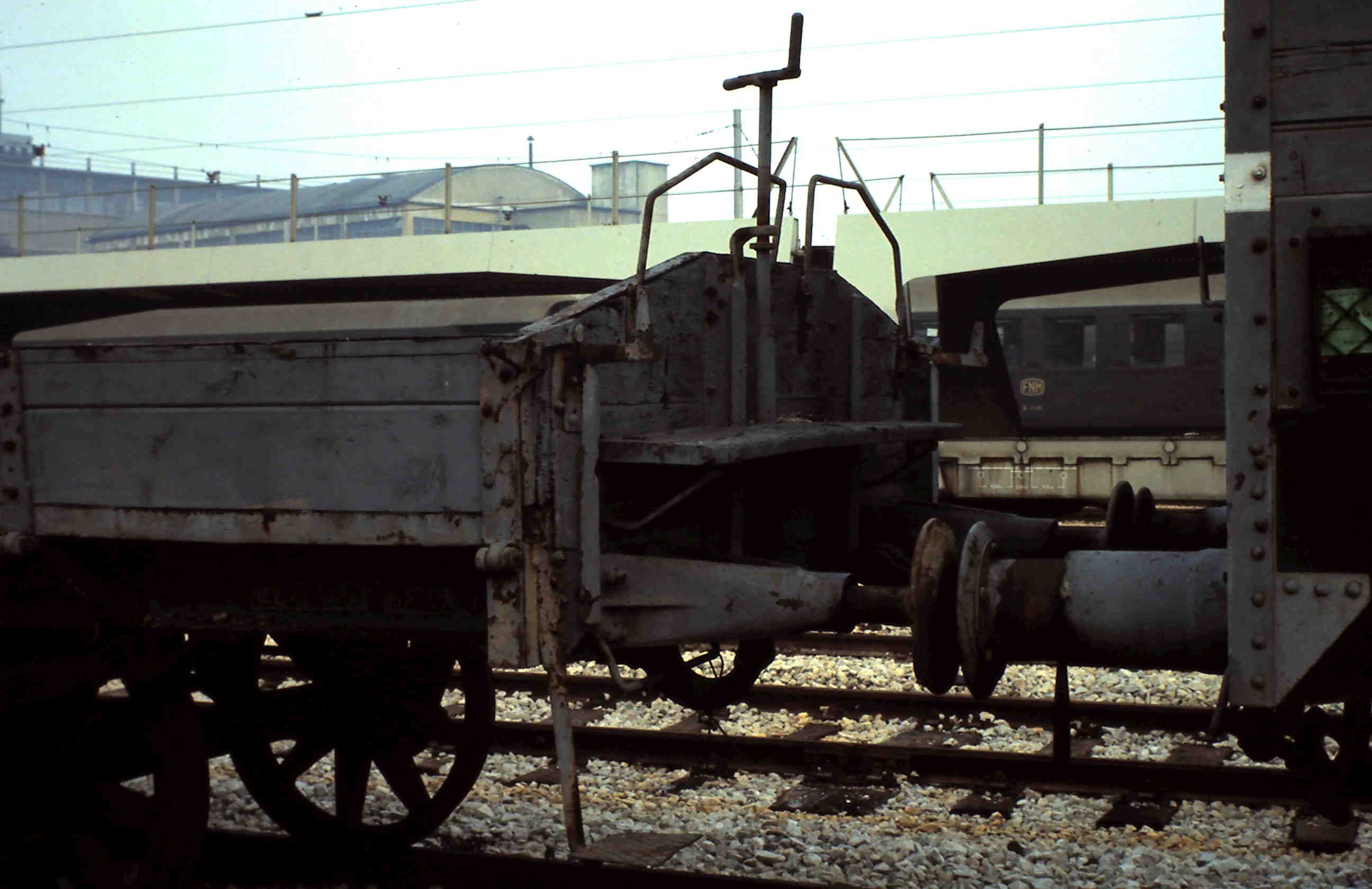The wagons in the Hf 3601-3678 series were built by Carminati & Toselli of Milan in 1916 in addition to another series of similar wagons both with hand brakes and without brakes. They differed from other series not only due to the presence of the hand brake, but also for their mostly very low sides and ends. Their structure was very similar to other freight wagons. Steel chassis with leaf spring suspension and 2-axles with double spoked wheels. Between the wheels, an eccentric mechanism suspended in the centre of the chassis connected to adjustable bars applied or released the brake pads from the wheel rims.
This was operated by the brakeman in response to signals from the driver by turning a wheel with an endless screw which was attached to the end of the wagon. This type of wagon had no brakeman’s cab and the brakeman had to sit on a board which acted as a bench. There were no safety features except for two handrails near the brake wheel. The floor and sides were made from wooden planking of varying thickness. The Hf 3621 wagon is preserved at the MILS Museum in Saronno.


